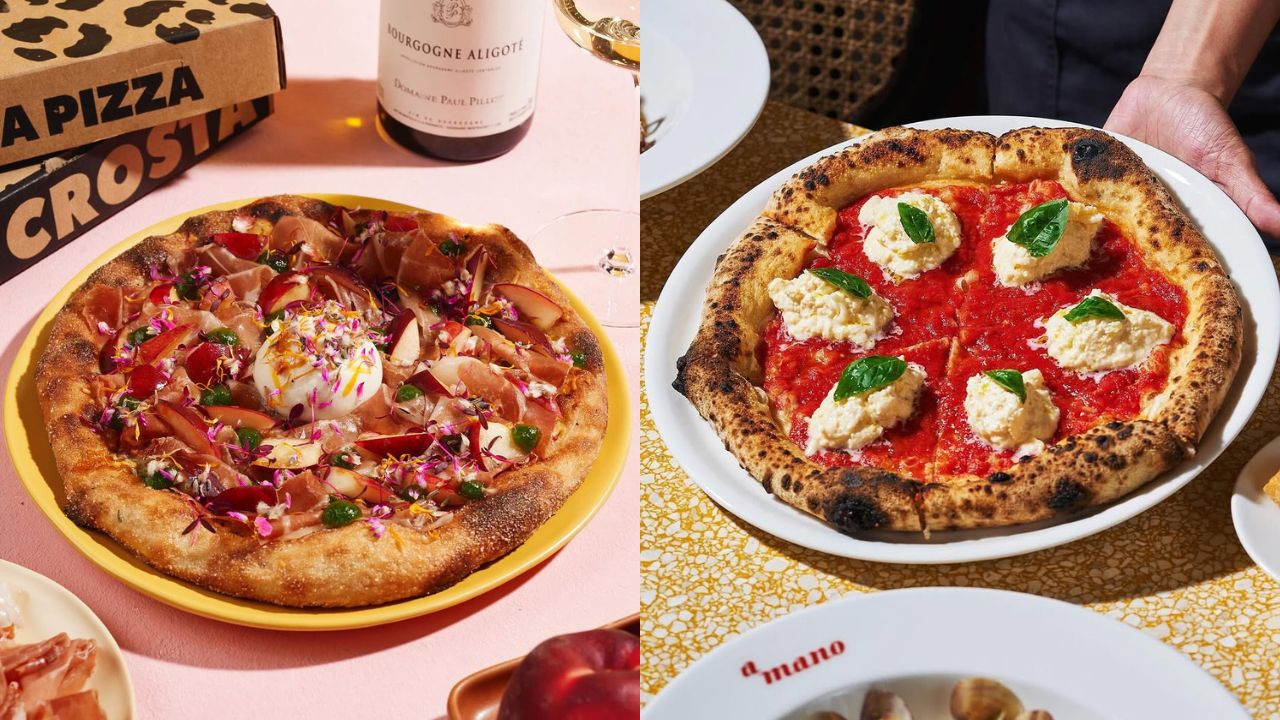Consumers today do not have as much loyalty to restaurants as they once did because they are spoilt for choice. Due to increased and stiff competition, surviving has become difficult. And the only way to last long in the game is to continue to be relevant.
Let’s run down some stats:
- There is a growing upper/middle class in the Philippines estimated at 18 to 20 million people.
- On average, 20 percent of the food budget of a middle-income household would be spent on dining out. This is according to the Family Income and Expenditures Survey (FIES) of the National Statistics Office.
- Market surveys reveal that fewer grocery items are being purchased because individuals and families eat out more. In the BPO industry, where more than 1.5 million people are working, most employees would eat out at least once a day.
- Since 2011, there has been a five percent growth of new restaurants and food establishments—from 80,050 to 84,250—in the country. Three percent or 3,000 of which occurred in the past two years since 2014. Forty-five percent of all restaurants and food establishments are located in NCR.
- If we estimate that 1,000 establishments would close each year, this would mean an average of 2,500 new food establishments opening each year since 2014 (or an average of 6.8 new food establishments per day).
- Since 2011, there has been a 33 percent growth in foodservice sales in the Philippines from $9 billion to $12 billion in 2016. Forty-four percent of these sales come from retail locations such as malls and supermarkets. Fast food chains, quick service, and casual service restaurants cover this segment.
Based on these statistics, it’s no wonder that there are so many people investing in the food industry. The questions to ask are, are they investing in the right market segment or is their market segment already saturated?
Since 2011, there has been a five percent growth of new restaurants and food establishments—from 80,050 to 84,250—in the country. Three percent or 3,000 of which occurred in the past two years since 2014. Forty-five percent of all restaurants and food establishments are located in NCR.
Points to consider
There are two key statistics that many in the industry overlook: the socio-economic class system of the Philippines (Class A to E) and the inflation rate. Both are important to know and follow as you need to understand who your target market is, who your competitors are, and what impact will the rise or fall of prices have on your business.
For example, the current inflation rate is three percent (2017). Why is this important? Inflation dictates the cost of goods, which in turn dictates the pricing of products and the spending power of the consumers. With the rise of inflation, over time it will force food costs to rise unless you find lower quality substitutes or increase prices.
This is where the squeeze comes in and where many start to feel the pinch. Increasing prices will drive customers away and make you compete in a new market segment, but keeping food cost above 35 percent will bankrupt you. So, it is better to be proactive rather than reactive. And it is important to monitor what is happening in the country so you can make adjustments before the storm comes.
One example involves the country’s top two fast food chains, Jollibee and McDonald’s. The increase in prices of raw materials (three percent inflation) is making Jollibee feel the pinch. According to media outlets that quote a Macquarie report, McDonald’s is in a better position to pass on the rising cost of raw materials since its customers belong mostly to the middle- and upper-income segments and are not as price sensitive. Jollibee customers are in the low- to middle-income segments, therefore the possible price increase can pose a hurdle to their customers.
So are we expecting an implosion in the industry in NCR?
This is where the squeeze comes in and where many start to feel the pinch. Increasing prices will drive customers away and make you compete in a new market segment, but keeping food cost above 35 percent will make you go bankrupt. So, it is better to be proactive rather than reactive.
The answer is yes and no. Based on statistics, the hardest hit segments are establishments that target the A and B socio-economic classes and apply a traditional restaurant model. The A and B markets are not price sensitive but they are becoming less loyal to individual operators, are demanding consistency, and are becoming more brand-conscious. The number of individual establishments (single-site concept that is a stand-alone business) that open up with an average check of P400 to P600 are the ones that feel the pressure. If we look at the past few years, many independent outlets have closed because they were either fighting for the same market share, had a product that lacked a clear identity, opened in the wrong location, or were undercapitalized. The independent concepts are the ones feeling the pressure.
The concepts that survived were able to build a brand like Wildflour, Ooma, and Toby’s Estate. What do they all have in common? They are all casual dining concepts that have a very clear concept focusing on comfort, quality, and consistency. Does that mean we need to have multiple outlets to survive? No, but, for these brands, having the capital to expand rapidly enhanced their reach and brand retention. There are many individual concepts that have survived but they are the minority compared with the number that closed within 24 months.
Roll with the punches
The problem facing the industry is the lack of originality and the blatant copying that exists. And this is why so many fail. The other challenge is the changing nature of the consumers. The past three years is an example.
How many new food parks have opened and how many are scheduled to open? How many new American barbecue places have opened in the past 24 months? How many new burger joints? How many new speakeasy bars? How many new Mexican taco concepts have risen? How many new casual cafe concepts are opening? How many new ramen outlets and brands are out there? The answer to all of these questions is “too many.”

Another shift we are seeing is the rise of the small output, fast return concepts and because of this, the traditional restaurant model also needs to change. These fast return concepts look at spending as little as they can, getting the smallest place they can (to reduce overheads), and trying to achieve the fastest return possible.
Is this more sustainable? No, but you risk less and test your product in the market before taking a bigger jump. Many of these concepts will close within 12 months but the operators will come up with something else immediately after. They burnt less cash to start with, therefore they have a chance to try again compared with a restaurant that usually gets just a single go.
In this day and age, a two-year return is not feasible anymore. It is so competitive that you have a 12-month window to get your returns and if you are lucky, another 12 to 24 months to make some money. If you don’t hit the spot, you will close within six months.
In this day and age, a two-year return is not feasible anymore. It is so competitive that you have a 12-month window to get your returns and if you are lucky, another 12 to 24 months to make some money. If you don’t hit the spot, you will close within six months. Part of the small cost startup trend is the rise of food parks, which have challenged the status quo. They fulfill a need where people can go to one location and have a choice of 30 different options. This is giving up-and-coming concepts a chance to thrive and test the market without paying the exorbitant rents that mall operators would charge for without the huge fit-out costs.
https://www.instagram.com/p/CPiKw7JHpro/
The changing nature of the industry is also challenging mall operators. Considering that 44 percent of food-related revenues are currently being spent in malls, mall operators have found the need to remain competitive with the changing times. The rise of food parks, eating suburbs (Poblacion, Katipunan, Kapitolyo) and hidden concepts are threatening the big boys’ grip. This is the reason why most mall operators are spending time and money in developing their food spaces to keep their market share. Look at the redevelopments of SM Megamall, Capitol Commons, Evia Mall in Las Piñas, Nuvali, and Alabang. The concept of the new mall is changing as the consumer changes with it. They need to create entertainment hubs that focus on food, fun, entertainment, and the so-called “Instagrammable” areas that bring people together in one space. We see this becoming more and more important with the rise of cafes and co-working spaces.
Survival of the fittest
The operators that have a greater chance of success are those that bring in established brands from overseas. Some of the biggest players in the industry fill their portfolio with such brands. These operators such as The Bistro Group (TGIFridays, Bulgogi Brothers, Denny’s) and AM-PHIL Food Concepts (Chili’s, Wild West Roadhouse Grill, Tokyo Tonteki) can be more sustainable as they have a foundation to build from. These established concepts usually come with a lot of support from the brand’s head office.
The changing nature of the industry is also challenging mall operators. Considering that 44 percent of food-related revenues are currently being spent in malls, the mall operators have found the need to remain competitive with the changing times.
Majority of this growth in concepts is driven by the millennial market that craves trends, social casual concepts, and places that are social media-worthy. They have a need to fit in within the crowd and want to be seen in spaces they can share with the world. We need to remember that the life cycle of a restaurant used to be five years but with the boom in the industry, the rise of the millennial, and the introduction of technology into marketing, that cycle has now been reduced. Most concepts today become obsolete within two to four years.
With the growth in the Philippines, we will see so many new concepts open up but we will also see just as many, if not more, close. Is this an implosion? No. It is an evolution or, as some might say, a revolution.
Originally published in F&B Report Vol. 14 No. 4













































